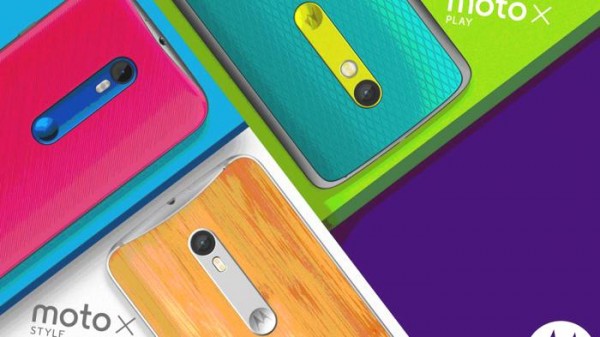
A topic of great interest for many of our readers is Sony’s mobile ambitions and how that plays into the company’s image sensor business. Just recently, it was revealed that Sony would be investing $4 billion into that division. Following that news, Sony revealed a new partnership with Japanese robotics firm ZMP to create Aerosens, a new drone company. While odd at first, Sony’s ambitions are clear; to create a compelling drone with stellar optics that are powered by the companies image sensors. In short, while Aerosens will be a fully functional company with its own path and vision for drones, the true goal of the company is to showcase Sony’s sensor technology and sell it to much larger players like Google, Amazon, Facebook, Parrot, Lockheed Martin, and DJI.
Now comes news that Motorola, a competitor of Sony Mobile, will be using the company’s latest camera sensor, one that even Sony itself isn’t using in their smartphone line.
Announced earlier this morning, the Motorola Moto X Style is the newest flagship smartphone that offers
21 MP sensor with f/2.0 aperture, 1.1 micron 1/2.4-inch sensor, Phase Detect Auto-Focus (PDAF) and 1080p/4K video HDR.
This new 21-megapixel sensor is actually powered by the Sony IMX230 camera sensor. The Xperia Z3+/Z4, the latest Sony flagship smartphone currently utilizes the Sony IMX220 though if a new flagship smartphone is on the way from Sony as rumored have pointed out, don’t be surprised if they also use the IMX230.
While some, including former Sony CEO Sir Howard Stringer, have called for Sony to keep their technology to themselves and not let it power competitors’ devices, the reality of the landscape is far different. Sony cannot afford to keep this technology to themselves when they are making billions from their competitors. While it would be an exclusive feature for Sony to keep, the truth is that image sensors are only part of the puzzle. Apple famously uses Sony’s older 8-megapixel sensor yet photos from the iPhone 6 tend to rival, if not flat out beat photos from Android devices that carry cameras with two or three times the megapixel count.
Even if Sony was able to replicate the photo quality of its competitors in its mobile line, the reason consumers pick a certain device is never hinged upon a single feature. For that reason, Sony till now has lost the mobile market and while they could keep technologies like the IMX230 camera sensor exclusive to their mobile division which sells around 40 million units a year, they are instead selling hundreds of millions of these sensors to their competitors and in turn, fueling the company.
Now this doesn’t mean that Sony is somehow on purpose piecing together devices for themselves that can’t compete. If fact, the reason you’re not finding the IMX230 in the current Xperia lineup is likely due to the fact that by the time they launched, Sony still hadn’t finished this image sensor. Samsung who is a fierce competitor of Apple, no matter if their mobile division is doing good or poorly continues to supply Apple when they can because it’s just good business, thanks to the volume of devices Apple sells. In this case, no matter if a consumer picks up an Xperia smartphone or one from Motorola, Sony stands to make a profit which is good business.
Discuss:
Do you think it’s wise for Sony to power its competitors’ devices?
[Via XperiaBlog]

You must be logged in to post a comment.